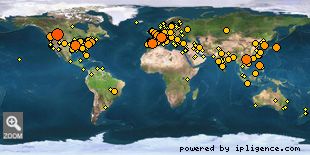 » NMR Jobs
» NMR Jobs |
|
|
|
|
|
|
 » Cool papers
» Cool papers |
|
|
|
|
|
|
 » NMR books
» NMR books |
|
|
|
|
|
|
 » NMR theses
» NMR theses |
|
|
|
|
|
|
 » NMR blogs
» NMR blogs |
|
|
|
|
|
|
 » NMR news
» NMR news |
|
|
|
|
|
|
 » NMR tweets
» NMR tweets |
|
|
|
|
|
|
 » NMR videos
» NMR videos |
|
|
|
|
|
|
 » NMR pictures
» NMR pictures |
|
|
|
|
|
|
 » Online Users: 163
» Online Users: 163 |
| 0 members and 163 guests |
| No Members online |
| Most users ever online was 1,278, 01-09-2024 at 07:38 AM. |
|
 » Welcome!
» Welcome! |
Welcome, NMR world!

Our visitors map.
|

 1H-detected characterization of carbonâ??carbon networks in highly flexible protonated biomolecules using MAS NMR 1H-detected characterization of carbonâ??carbon networks in highly flexible protonated biomolecules using MAS NMR |
|
Jun 09, 2023 - 12:04 PM - by nmrlearner
|
 1H-detected characterization of carbonâ??carbon networks in highly flexible protonated biomolecules using MAS NMR
1H-detected characterization of carbonâ??carbon networks in highly flexible protonated biomolecules using MAS NMR
Abstract
In the last three decades, the scope of solid-state NMR has expanded to exploring complex biomolecules, from large protein assemblies to intact cells at atomic-level resolution. This diversity in macromolecules frequently features highly flexible components whose insoluble environment precludes the use of solution NMR to study their structure and interactions. While High-resolution Magic-Angle Spinning (HR-MAS) probes offer the capacity for gradient-based 1H-detected spectroscopy in solids, such probes are not commonly used for routine MAS NMR experiments. As a result, most exploration of the flexible regime entails either 13C-detected experiments, the use of partially perdeuterated systems, or ultra-fast MAS. Here we explore proton-detected pulse schemes probing through-bond 13Câ??13C networks to study mobile protein sidechains as well as polysaccharides in a broadband manner. We demonstrate the use of such schemes to study a mixture of microtubule-associated protein (MAP) tau and human microtubules (MTs), and the cell wall of the fungus Schizophyllum commune using 2D and 3D spectroscopy, to show its viability for obtaining unambiguous correlations using standard fast-spinning MAS probes at high and ultra-high magnetic fields.
Source: Journal of Biomolecular NMR
|

 0 Replies | 181 Views
0 Replies | 181 Views
|

 Efficient 18.8Â*T MAS-DNP NMR reveals hidden side chains in amyloid fibrils Efficient 18.8Â*T MAS-DNP NMR reveals hidden side chains in amyloid fibrils |
|
Jun 09, 2023 - 12:04 PM - by nmrlearner
|
 Efficient 18.8Â*T MAS-DNP NMR reveals hidden side chains in amyloid fibrils
Efficient 18.8Â*T MAS-DNP NMR reveals hidden side chains in amyloid fibrils
Abstract
Amyloid fibrils are large and insoluble protein assemblies composed of a rigid core associated with a cross-β arrangement rich in β-sheet structural elements. It has been widely observed in solid-state NMR experiments that semi-rigid protein segments or side chains do not yield easily observable NMR signals at room temperature. The reasons for the missing peaks may be due to the presence of unfavorable dynamics that interfere with NMR experiments, which result in very weak or unobservable NMR signals. Therefore, for amyloid fibrils, semi-rigid and dynamically disordered segments flanking the amyloid core are very challenging to study. Here, we show that high-field dynamic nuclear polarization (DNP), an NMR hyperpolarization technique typically performed at low temperatures, can circumvent this issue because (i) the low-temperature environment (~â??100Â*K) slows down the protein dynamics to escape unfavorable detection regime, (ii) DNP improves the overall NMR sensitivity including those ofÂ*flexible side chains, and (iii) efficient cross-effect DNP biradicals (SNAPol-1) optimized for high-field DNP (â?¥â??18.8Â*T) are employed to offer high sensitivity and resolution suitable for biomolecular NMR applications. By combining these factors, we have successfully established an impressive enhancement factor of εâ??~â??50 on amyloid fibrils using an 18.8Â*T/ 800Â*MHz magnet. We have compared the DNP efficiencies of M-TinyPol, NATriPol-3, and SNAPol-1 biradicals on amyloid fibrils. We found that SNAPol-1 (with εâ??~â??50) outperformed the other two radicals. The MAS DNP experiments revealed signals of flexible side chains... [Read More]
|

 0 Replies | 109 Views
0 Replies | 109 Views
|
|
 » BioNMR wiki
» BioNMR wiki |
|
|
|
|
|
|
 » NMR discussion
» NMR discussion |
|
|
|
|
|
|
 » NMR conferences
» NMR conferences |
|
|
|
|
|
|
 » NMR software
» NMR software |
|
|
|
|
|
|
 » Pulse sequences
» Pulse sequences |
|
|
|
|
|
|
 » NMR community
» NMR community |
|
|
|
|
|
|
 » NMR presentations
» NMR presentations |
|
|
 » NMR web resources
» NMR web resources |
|
|
|
|
|
|
 » NMR feature requests
» NMR feature requests |
|
|
 » NMR bookmarks
» NMR bookmarks |
|
|
|
|
|
|
 » Stats
» Stats |
Members: 3,202
Threads: 25,773
Posts: 26,159
Top Poster: nmrlearner (23,217)
|
| Welcome to our newest member, bpadmanabhan |
|



